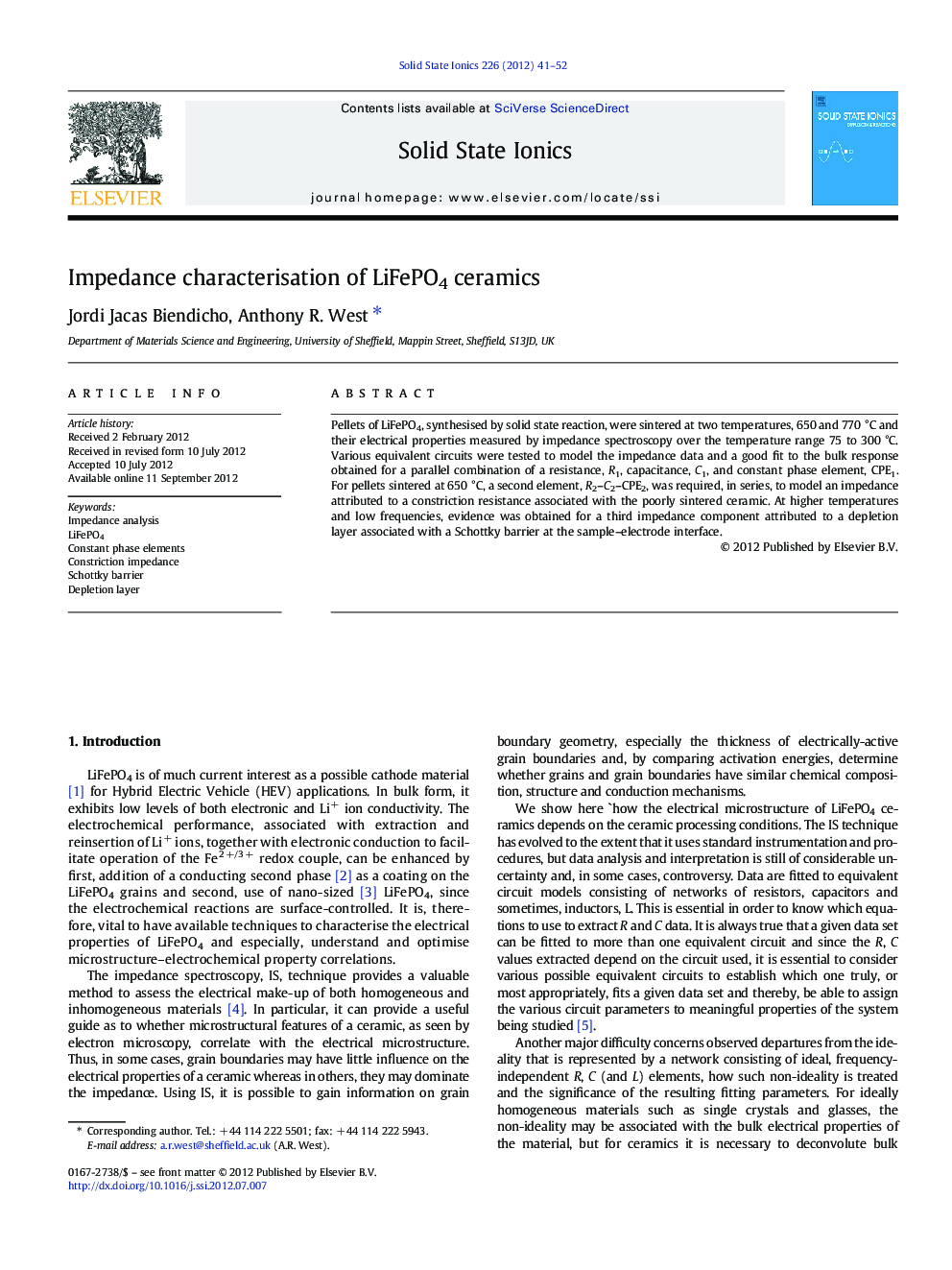| Article ID | Journal | Published Year | Pages | File Type |
|---|---|---|---|---|
| 1298178 | Solid State Ionics | 2012 | 12 Pages |
Pellets of LiFePO4, synthesised by solid state reaction, were sintered at two temperatures, 650 and 770 °C and their electrical properties measured by impedance spectroscopy over the temperature range 75 to 300 °C. Various equivalent circuits were tested to model the impedance data and a good fit to the bulk response obtained for a parallel combination of a resistance, R1, capacitance, C1, and constant phase element, CPE1. For pellets sintered at 650 °C, a second element, R2–C2–CPE2, was required, in series, to model an impedance attributed to a constriction resistance associated with the poorly sintered ceramic. At higher temperatures and low frequencies, evidence was obtained for a third impedance component attributed to a depletion layer associated with a Schottky barrier at the sample–electrode interface.
► The electrical microstructure of sintered LiFePO4 pellets depends greatly on sintering conditions. ► Poorly-sintered ceramics show constriction impedance as well as bulk impedance. ► The electrode–sample interface shows evidence for a depletion layer whose resistance increases on application of a dc bias. ► Constant phase elements are essential components to fitting impedance data and allow separation of bulk, grain boundary and electrode contact effects.
